What's New
Displaying results 211 - 220 of 4052
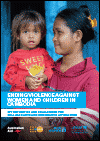
Resource | Publications,
UNICEF East Asia and Pacific Regional Office (EAPRO), UNFPA Asia Pacific Regional Office (APRO), and UN WOMEN Regional Office for Asia and the Pacific (ROAP) partnered on a regional, multi-country initiative in Cambodia, Papua New Guinea, the Philippines and Viet Nam to explore opportunities and challenges for better coordination, integration and collaboration for VAW and VAC policies, action plans, programs and services in the East Asia and Pacific region, focusing on violence that occurs within spaces and relationships of trust (e.g., intimate or dating relationships, family violence, school violence).
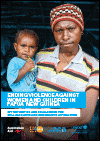
Resource | Publications,
UNICEF East Asia and Pacific Regional Office (EAPRO), UNFPA Asia Pacific Regional Office (APRO), and UN WOMEN Regional Office for Asia and the Pacific (ROAP) partnered on a regional, multi-country initiative in Cambodia, Papua New Guinea, the Philippines and Viet Nam to explore opportunities and challenges for better coordination, integration and collaboration for VAW and VAC policies, action plans, programs and services in the East Asia and Pacific region, focusing on violence that occurs within spaces and relationships of trust (e.g., intimate or dating relationships, family violence, school violence).
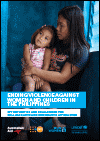
Resource | Publications,
UNICEF East Asia and Pacific Regional Office (EAPRO), UNFPA Asia Pacific Regional Office (APRO), and UN WOMEN Regional Office for Asia and the Pacific (ROAP) partnered on a regional, multi-country initiative in Cambodia, Papua New Guinea, the Philippines and Viet Nam to explore opportunities and challenges for better coordination, integration and collaboration for VAW and VAC policies, action plans, programs and services in the East Asia and Pacific region, focusing on violence that occurs within spaces and relationships of trust (e.g., intimate or dating relationships, family violence, school violence).
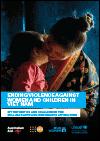
Resource | Publications,
UNICEF East Asia and Pacific Regional Office (EAPRO), UNFPA Asia Pacific Regional Office (APRO), and UN WOMEN Regional Office for Asia and the Pacific (ROAP) partnered on a regional, multi-country initiative in Cambodia, Papua New Guinea, the Philippines and Viet Nam to explore opportunities and challenges for better coordination, integration and collaboration for VAW and VAC policies, action plans, programs and services in the East Asia and Pacific region, focusing on violence that occurs within spaces and relationships of trust (e.g., intimate or dating relationships, family violence, school violence).
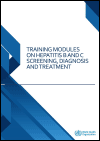
Resource | Publications,
The increasing trend in hepatitis-related deaths is alarming and action can be taken. Cirrhosis and liver cancer due to hepatitis is preventable as treatment prevents disease progression and hepatitis C infection is curable. The Global Health Sector Strategy (GHSS) for Viral Hepatitis 2016-2021 outlines the vision of elimination of viral hepatitis as a public threat by 2030, as part of Sustainable Development Goals for health.
Many countries are developing their national response for comprehensive prevention, treatment and care for hepatitis, as part of Health for All. Delivery of services for screening, diagnosis and treatment of hepatitis B and C as part of existing health services underlies universal health coverage. Capacity to deliver good quality services by all cadres of health care providers for hepatitis care is important.
These training modules have been developed by WHO South-East Asia and Western Pacific Regional Offices as part of biregional collaboration, and were developed following global WHO guidelines for hepatitis which can be adapted to country-specific needs. The modules are available publicly for the use capacity building of health care providers.

Resource | Presentations,
Availability of disaggregated data is crucial for informed response against the HIV epidemic in the country. NCASC has developed and implemented the HIV Care and ART Tracking System to ensure the availability of HIV testing and treatment-related data in real-time at the national and subnational level. This is the first time that NCASC has analyzed and disseminated the top ten causes of death, LTFU and missing situation of PLHIV using disaggregated data.
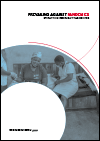
Resource | Publications,
Insufficient investment and action on HIV and other pandemics left the world exposed to COVID-19. Had health systems and social safety nets been even stronger, the world would have been better positioned to slow the spread of COVID-19 and withstand its impact. COVID-19 has shown that investments in health save lives but also provide a foundation for strong economies. Health and HIV programmes must be fully funded, both in times of plenty and in times of economic crisis.
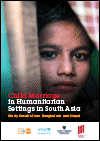
Resource | Publications,
Every child has a right to a childhood where they can play, where caregivers ensure their wellbeing, and where they are protected. Child marriage prevents this from happening and can result in serious human rights violations. In South Asia there are an estimated 285 million child brides. Fifty-nine per cent of women aged 20–24 in Bangladesh were married under the age of 18, 40 per cent in Nepal and 27 per cent in India. While the rates of child marriage are decreasing in the region, the vulnerability and insecurity that arises during humanitarian crises threatens to undermine this progress.
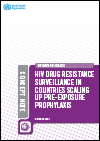
Resource | Publications,
This technical guidance describes the methods and implementation considerations to monitor the prevalence of HIV drug resistance among PrEP users diagnosed with HIV through a cross-sectional survey. The outcomes of the survey will be used to inform the selection of maximally effective first-line combination antiretroviral therapy for PrEP users who acquire HIV.
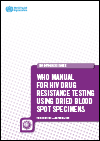
Resource | Publications,
HIV-1 drug resistance (HIVDR) genotyping is an essential component of the WHO global HIVDR surveillance strategy. Plasma “gold standard” specimen type for HIVDR genotyping, but its use may not be feasible in rural, remote areas in low- and middle-income countries, since preparing and storing it require personnel and laboratory infrastructure that are often lacking. An alternative specimen type is dried blood spots (DBS), which can be made without special laboratory processing. DBS are more easily transported than plasma because they can be shipped at ambient temperature as non-hazardous materials using regular mail or courier services.





